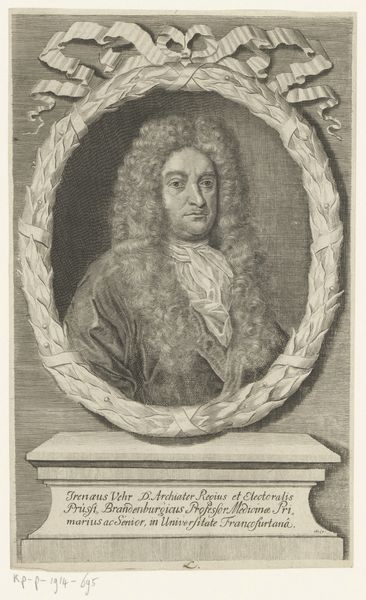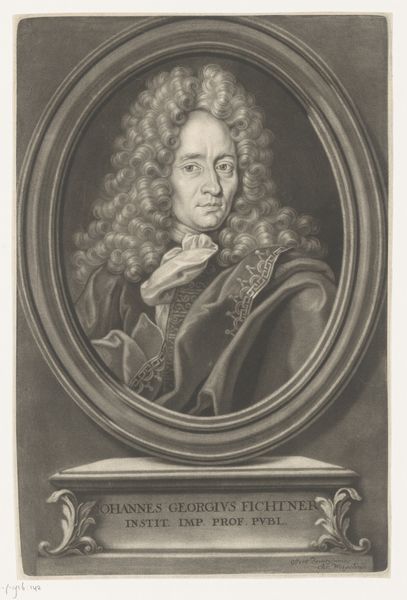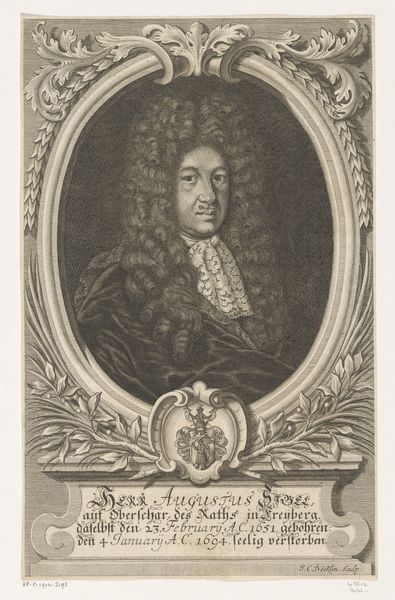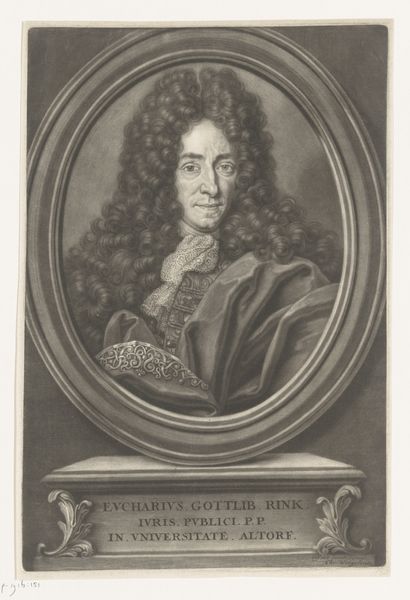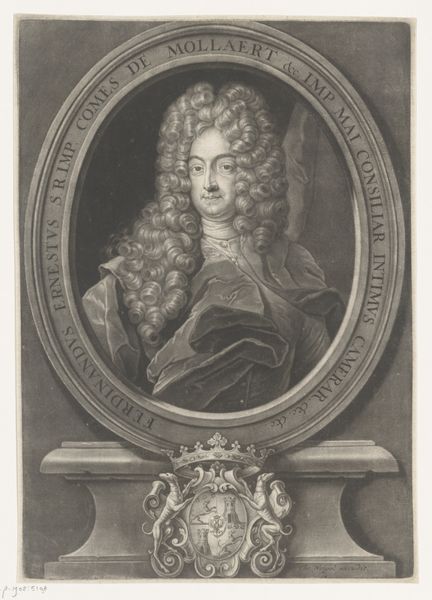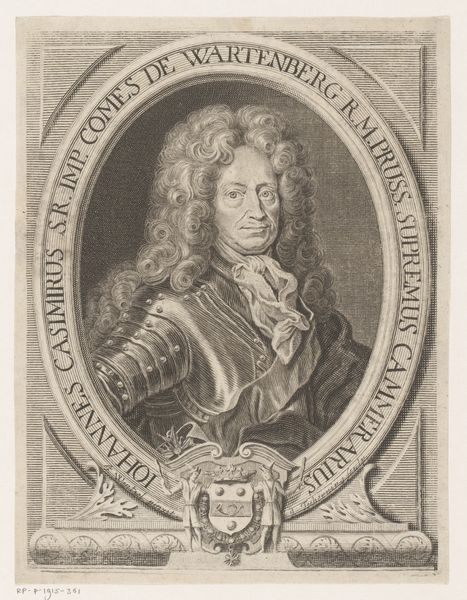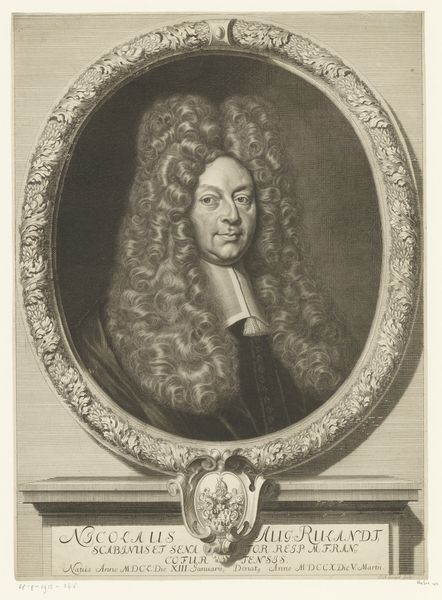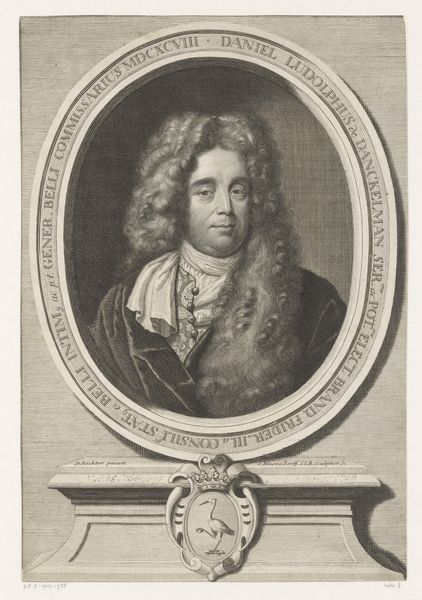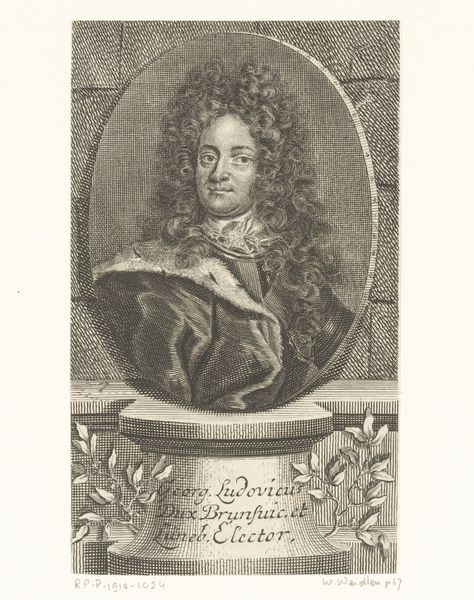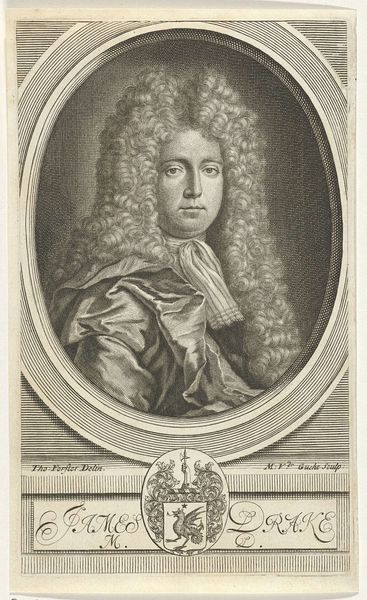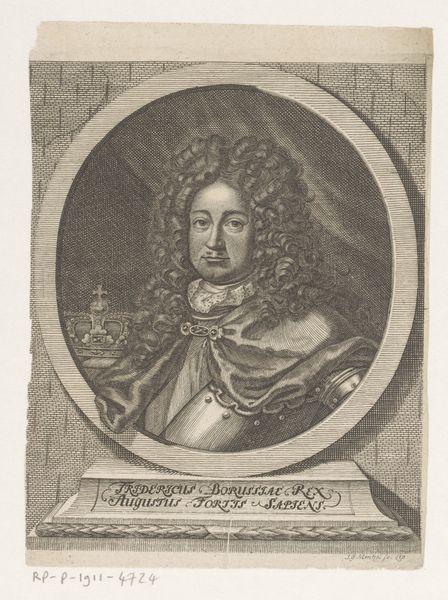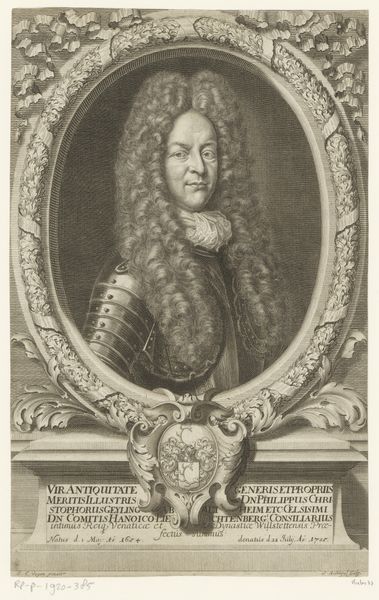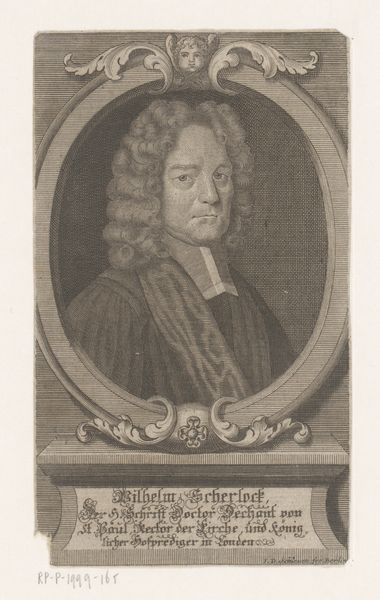
drawing, print, paper, engraving
#
portrait
#
drawing
#
baroque
# print
#
charcoal drawing
#
paper
#
portrait reference
#
pencil drawing
#
framed image
#
portrait drawing
#
engraving
Dimensions: height 199 mm, width 152 mm
Copyright: Rijks Museum: Open Domain
Curator: "Portret van Mathieu Pinault in ovale lijst," Simon Thomassin’s print from 1701. I’m struck by how meticulously it's rendered, especially considering the time period. It makes me think of the labor involved. What catches your eye? Editor: I find the level of detail really amazing – the hair, the fabric. But thinking about it as a print, reproduced many times… it makes me wonder about its function. Was it about accessibility, or about solidifying status? What do you see in this piece? Curator: The key question is, what was Thomassin selling? Was it the image of Pinault, readily consumed and disseminated, or was it a demonstration of Thomassin’s technical skill, and thus, his labor, objectified as value in the art market? Perhaps both? Note the emphasis placed on the materials: paper, ink, the very tools of engraving, pushing them into the realm of art, not mere reproduction. Editor: That’s a perspective I hadn't considered. The print as a material object showcasing the artist's labour, rather than *just* being about the portrait itself. Did the proliferation of prints like this change how people viewed "art" versus more functional images at the time? Curator: Absolutely. It starts blurring those rigid boundaries between "high" art and the graphic arts, shifting the focus towards the *means* of production, towards acknowledging the human element and the socioeconomic conditions shaping its creation and distribution. Each impression, pulled from the plate, represents hours of work and an exchange of value, does it not? Editor: Yes, definitely. Seeing it as labor-intensive print rather than a quickly produced portrait makes it feel like a much different object. I hadn't really considered how prints fit into that "art versus craft" conversation. Curator: Exactly! And understanding that reframes how we see not only this work, but art production more generally. Editor: I’ll definitely be thinking about that dichotomy differently now, thank you! Curator: My pleasure. Seeing art through the lens of its production transforms our understanding of art history.
Comments
No comments
Be the first to comment and join the conversation on the ultimate creative platform.
